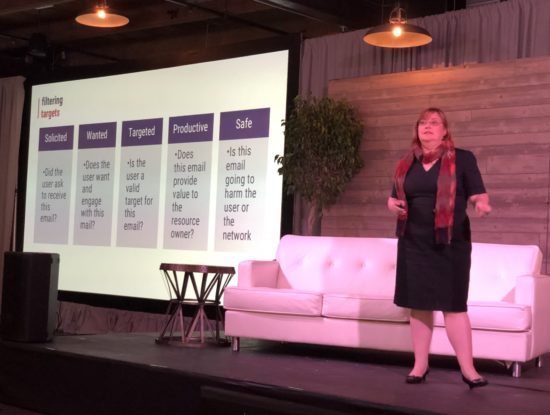Back to the office!
I’m back in the office after a busy June. The 2 continent, 3 city tour was unexpectedly extended to a 4th city thus I was out most of last week as well.
What was I doing? We spent a week in Dublin, which is an awesome and amazing city and I love it a little bit more every time we visit. After Dublin I jetted off to Chicago, where I spoke at ActiveCampaign’s first user conference.
The talk I did for ActiveCampaign was about how we’re in the middle of a fundamental shift in how email is filtered, particularly at the consumer ISPs. In order reach the inbox. we need to think beyond IP or domain reputation. We need to stop thinking of filters as a way of sorting good mail from bad mail. I touched a little on these concepts in my What kind of mail do filters target? blog post.
The shift in filtering is changing how email reaches the inbox and what we can and should be monitoring. At the same time, the amount of data we can get back from the ISPs is decreasing. This means we’re looking at a situation when our primary delivery fixes can’t be based on feedback from the filters. This is, I think, going to be an ongoing theme of blog posts over the next few months.
The next trip was to spend 2 days onsite at a client’s office. These types of onsite training are intense but I do enjoy them. As this was mostly client specific, there isn’t much I can share. They did describe it as a masterclass in deliverability, so I think it was also intense for them.
That was the planned 2 continent, 3 city tour. The last city was a late addition of a more personal nature. We headed downstate to join my cousin and her family in saying goodbye to my uncle. He was an amazing man. A larger than life, literal hero (underwater EOD, awarded the silver star) whom I wish I had known better. Most of what I remember is how much he loved and adored my aunt.
I’ll be getting back into the swing of blogging over the next few days. It’s good to be back and not looking at traveling in the short term.

